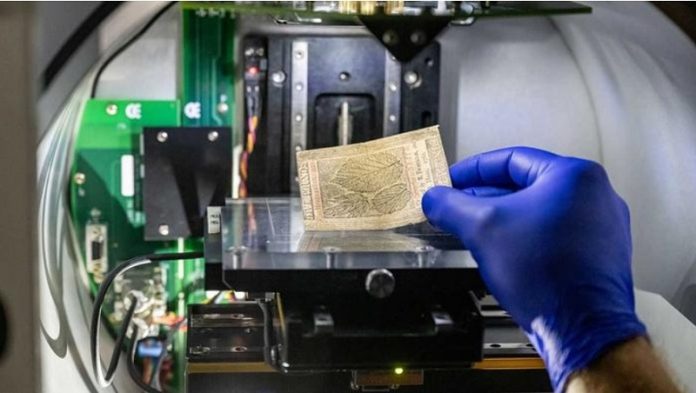
Benjamin Franklin is famous for many inventions, but now, a team from the University of Notre Dame has discovered that he should also be recognized for his clever ways of making (real) money!
Franklin printed nearly 2.5 million money notes for the American Colonies.
The researchers found that he used some pretty cool techniques to do this.
The team has spent the last seven years looking at about 600 money notes from when the American Colonies were around, including some printed by Franklin himself, some from other printers, and even some fake notes.
Professor Khachatur Manukyan, who led the research, says that making money was very important for the American Colonies’ independence.
The Colonies needed money to grow their economy. But, there was a big problem: people kept making fake money. So, Franklin had to find ways to make his money harder to copy.
Manukyan’s team used special tools to look really closely at the inks, paper, and fibers that Franklin used in his money. They found some pretty interesting stuff!
One of the things they noticed was that the colors Franklin used were different from those in the fake money. They found that the fake money had a lot of calcium and phosphorus, but Franklin’s money didn’t.
They think that Franklin used a special black dye made from rock graphite, instead of the usual pigment made from burned vegetable oils or bone.
The researchers also found that Franklin was smart about the paper he used. Most people think that Zenas Marshall Crane was the first to put tiny fibers in paper money in 1844, but it seems like Franklin was doing this way before then. He was adding colored silks to his paper!
Plus, the team found out that Franklin added a see-through material called muscovite to his paper, which made it harder to fake. They believe that Franklin started doing this to make the money notes stronger, and then kept doing it because it helped stop counterfeiters.
This project was unusual for the physics lab, because it had to handle rare and fragile materials, which could be a bit scary.
But Manukyan says that it shows how important it is for different fields, like physics, history, and art, to work together.
They couldn’t have made these discoveries without everyone’s help.
Follow us on Twitter for more articles about this topic.



